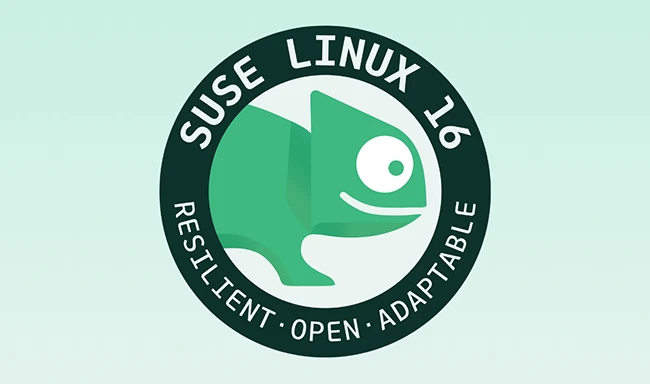SUSE Linux Enterprise Server 16 puts AI in the operating system
SUSE has released SUSE Linux Enterprise Server (SLES) 16, calling it AI-ready and built for long-term use. The release marks the first major update in the Enterprise Server line in more than five years and signals a new direction for how Linux might integrate with AI tools in the future.

A Linux built for the next decade
SLES 16 is the company’s first release built on its new Adaptable Linux Platform. It’s designed for the growing mix of workloads that span data centers, cloud environments, and edge systems. SUSE says this foundation allows administrators to separate the immutable host OS from the application layer, giving teams better control and consistency when deploying or updating systems.
The release will also have the longest support cycle SUSE has ever offered. Each version of SLES 16 will get at least 10 years of general support, followed by six years of extended lifecycle support. That means users can keep running the same major version for up to 16 years. For many enterprises, that’s a key promise: stable infrastructure that won’t force a migration every few years.
AI readiness at the operating system level
The highlight of this release is its preparation for AI workloads. SUSE says SLES 16 can serve as a foundation for training, deploying, or managing AI models. The OS includes new support for NVIDIA’s CUDA toolkit and GPU acceleration, which will help teams run compute-intensive AI workloads more easily on SUSE systems.
SLES 16 also adds container and workload management tools suited for AI applications. These include the latest versions of Podman and Kubernetes, as well as improved integration with SUSE’s Rancher platform for orchestration. Together, these tools aim to make it easier to deploy, monitor, and scale AI or machine learning workloads without having to rebuild core infrastructure.
Built for reproducibility and security
Security and compliance are another major focus in this release. SUSE has introduced “reproducible builds,” meaning organizations can verify that what they run in production matches the source code provided. This makes it easier to meet compliance standards and detect any changes introduced during packaging or deployment.
The company also says that SLES 16 has been built with future date safety in mind. It is “Y2038-ready,” meaning it won’t encounter the same time representation issues that older 32-bit systems will face when the current epoch time limit is reached in 2038. For large enterprises and government users that plan decades ahead, this kind of preparation can make long-term system planning simpler.
The new version also comes with expanded kernel security features, support for confidential computing, and updates to SELinux for more consistent policy enforcement. These enhancements give administrators more control over what processes can access or modify sensitive data.
Simplified management and deployment
SUSE is also updating its management tools. The new Agama installer replaces the traditional YaST-based installer for a more flexible setup experience. It supports both graphical and web-based interfaces, allowing installations to be managed locally or remotely.
SUSE Manager, the company’s lifecycle management and patching tool, has been updated to take advantage of the new platform design. It now provides better support for mixed environments, including those running other Linux distributions.
This means that installing, updating, and maintaining systems should require less manual work. SUSE says the goal is to make lifecycle management predictable and less dependent on the host configuration.
Extended lifecycle and versioning changes
With SLES 16, SUSE is changing how it handles versioning. Instead of frequent service packs, the company will now ship smaller, continuous updates through an online channel. This approach is meant to provide new features and security fixes faster, while reducing the need for large version upgrades.
The long-term support model is another shift. Each major version will have a 10-year base period with the option to extend for another six years. This helps enterprises align system upgrades with hardware refresh cycles or regulatory requirements.
Positioning for enterprise and cloud growth
SUSE is aiming SLES 16 at enterprises running mission-critical workloads across data centers, cloud environments, and edge locations. The release supports the latest x86-64 and Arm64 architectures and includes optimizations for cloud platforms such as AWS, Microsoft Azure, and Google Cloud.
The company also plans to keep SLES and openSUSE Leap aligned, so developers and enterprises can move between community and enterprise environments without major changes. That continuity has long been one of SUSE’s selling points in the Linux ecosystem.